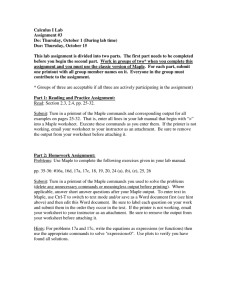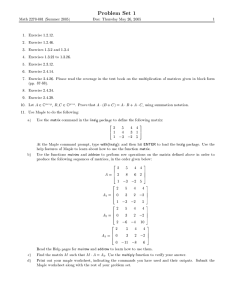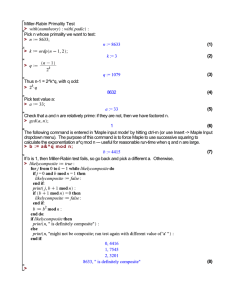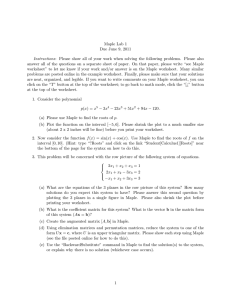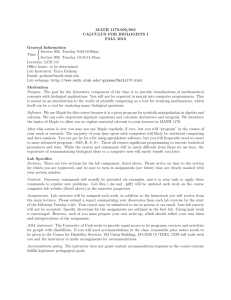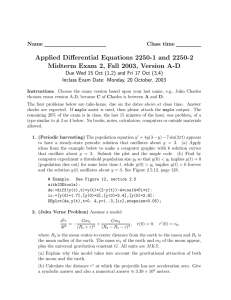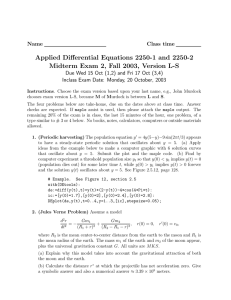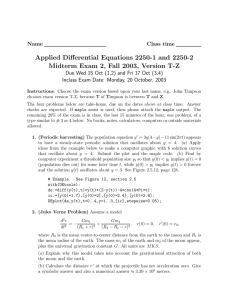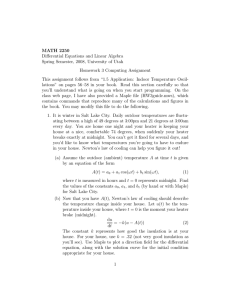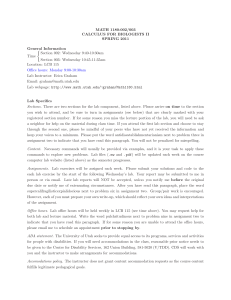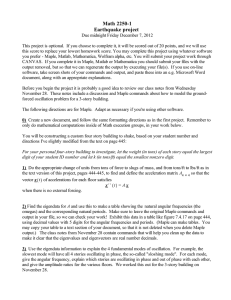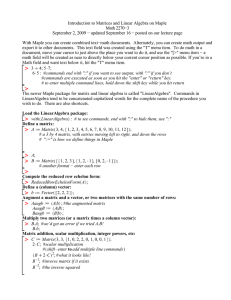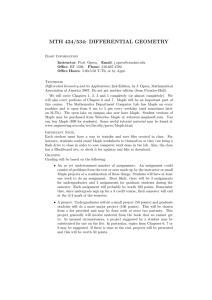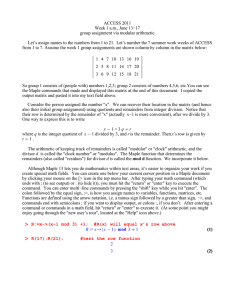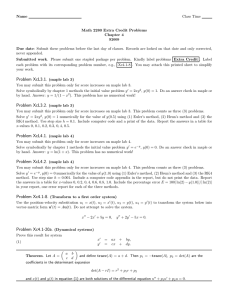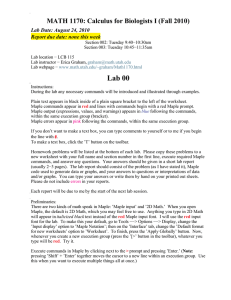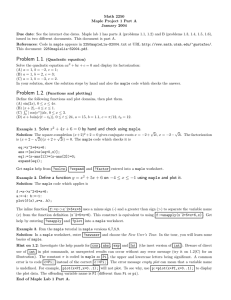The University of British Columbia Sessional Examinations — April 2009
advertisement
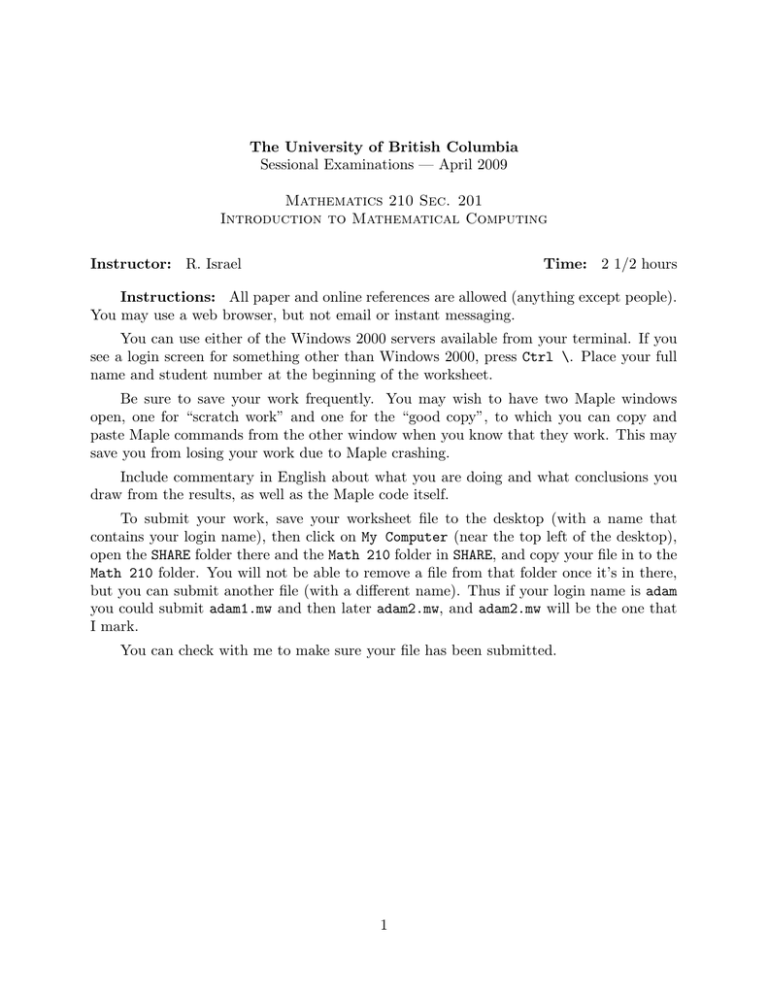
The University of British Columbia Sessional Examinations — April 2009 Mathematics 210 Sec. 201 Introduction to Mathematical Computing Instructor: R. Israel Time: 2 1/2 hours Instructions: All paper and online references are allowed (anything except people). You may use a web browser, but not email or instant messaging. You can use either of the Windows 2000 servers available from your terminal. If you see a login screen for something other than Windows 2000, press Ctrl \. Place your full name and student number at the beginning of the worksheet. Be sure to save your work frequently. You may wish to have two Maple windows open, one for “scratch work” and one for the “good copy”, to which you can copy and paste Maple commands from the other window when you know that they work. This may save you from losing your work due to Maple crashing. Include commentary in English about what you are doing and what conclusions you draw from the results, as well as the Maple code itself. To submit your work, save your worksheet file to the desktop (with a name that contains your login name), then click on My Computer (near the top left of the desktop), open the SHARE folder there and the Math 210 folder in SHARE, and copy your file in to the Math 210 folder. You will not be able to remove a file from that folder once it’s in there, but you can submit another file (with a different name). Thus if your login name is adam you could submit adam1.mw and then later adam2.mw, and adam2.mw will be the one that I mark. You can check with me to make sure your file has been submitted. 1 [ 20 ] 1. Produce a plot in Maple that looks like this: Commands in the plots and plottools packages may be used. [ 21 ] 2(a). Find a polynomial p(x) such that p(n) = an for n from 1 to 8, where an is the n’th digit in your student number. (b). Plot p(x) (from part (a)) for 1 ≤ x ≤ 8 together with the eight points (n, an ), showing only the part of the graph for 0 ≤ y ≤ 10. Z ∞ dx √ [ 12 ] 3. Use a change of variables to transform into the integral of a 1 + ex 0 smooth function over a finite interval. [ 12 ] 4. Use the methods of the last part of Lesson 17 to find Z [ 20 ] 5. Find, with error at most 10 on the tail of this series. −4 x+1 dx + 1)x2 (x2 ∞ X ln(k) by using upper and lower bounds , 1 + k 3/2 k=1 [ 15 ] 6. Find a continued fraction that approximates the function f (x) = sin(x) on the interval −1 ≤ x ≤ 1 with maximum error at most 10−4 . [ 100 ] Total marks 2

